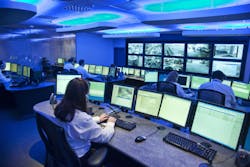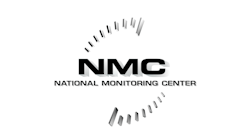Wholesale Monitoring and the Quest for RMR
One way to grow your business is to scale up operations; however, eroding margins on surveillance hardware have left many integrators realizing that growth via simply doing more installs leaves them at a break-even at best.
Offering remote alarm and event monitoring – particularly for video-based events focusing on intrusion detection or prevention – through a partnership with a qualified central monitoring provider is one way to reverse the trend of declining profitably some integrators have faced. Many integrators have already found this to be an effective way to invigorate their business and provide their customers with enhanced security and a differentiated offering, without the need for further investment in personnel, training or equipment.
A wholesale monitoring company can offer integrator partners new opportunities to deliver advanced services that produce steady RMR. Of course, dependable RMR equates to the ability to extract more value from each sale, and offer customers extended services that increase their overall level of security, while potentially reducing their operational costs.
Technological advancements have created products that can be monitored cost-effectively, through their ability to detect trespassing or unauthorized presence at secure sites and send an event to a monitoring center.
Take, for example, construction companies whose bottom lines are impacted by equipment theft. Each year, equipment theft costs are estimated to be between $300 million and $1 billion. More troubling is that these numbers do not include the theft of tools or building materials, or any damage to equipment and premises caused during a theft. Also not included in these estimates is loss from business interruption, such as rentals, project-delay penalties and wasted workforce and management time.
In light of these realities, it is clear that tremendous opportunities are available for integrators in the video surveillance services market. The broad base of monitoring customers, coupled with continually increasing demand for video surveillance offer tremendous potential for increasing RMR with video monitoring services.
By partnering with a strong wholesale monitoring company, integrators can seize on the advantage these services offer as they seek to raise the valuation of their companies in the face of lower equipment margins. The key is to find the right partner and nurture that relationship to get the fullest benefit.
Finding the Right Partner
When looking for a monitoring provider to partner with, there are a few factors that should be considered to ensure the best fit. The first is the potential partner’s overall experience with handling video verification.
Compared to traditional monitoring, video monitoring is generally more interactive, requiring operators to make a greater number of higher-level decisions; therefore, regardless of a company’s monitoring experience, if that experience does not include handling video-enabled events, you should look elsewhere.
A second important factor to consider is a monitoring company’s experience working with events initiated by video analytics. Rather than a traditional sensor that generates an alarm signal and associates video from the closest camera with that signal, cameras or analytics serve as the source of the alarm. As such, analytics can be more “tunable” to ensure the appropriate alarms are generated under the appropriate conditions. Optimizing performance relies on identifying the right settings and properly configuring analytics, and many advanced monitoring centers that are comfortable with analytics systems are in the best position to recommend or even make the changes necessary to get the most out of video analytics.
The software a potential monitoring center partner uses is another consideration, especially its compatibility – or lack thereof – with your preferred video products. Most monitoring centers run automation software that offers integrations with common alarm and video platforms; thus, it is important to be sure your chosen partner is capable of monitoring the specific equipment you plan to use for your installations.
You should also look for a partner with a solid redundancy plan. Larger operations tend to have secondary and tertiary backup sites, disaster recovery locations or agreements with other monitoring centers to transfer incoming signals to an alternate site in the event of an outage of some type at their facility that could prevent them from performing their duties.
Finally, consider the company’s location. Although this is not a strict requirement, if a monitoring partner is physically close, this can offer the benefit of bringing select customers to the facility for a tour, which enables them to understand what the operation looks like. Some integrators who do wholesale monitoring may prefer not to let on that the central station is a separate entity, but often it can be beneficial to describe to customers that monitoring is the center’s single task –thus, enabling integrators to focus on the elements they do best.
Expanding the Partnership
Forging a relationship is an important first step in generating greater RMR with video services, but it is just that – a first step. Once that partnership has been created, it is equally vital to nurture that relationship, which will pay increasing and continued dividends for both parties. While each partnership is unique, there are a few common strategies integrators can employ to ensure continued growth from monitoring services.
When evaluating new products or services, work closely with the monitoring company. Many providers welcome the opportunity to expand their offerings into new areas integrators may bring to them. This works both ways, as the monitoring company may be in the process of evaluating new technologies and offerings that integrators may not be aware of, which an integrator could use to help differentiate themselves from their competition.
Moving forward, it is a good practice to review account-handling procedures and the overall performance of installed systems regularly. This helps ensure that a small issue does not slowly turn into a large issue that could escalate into a conflict or inability to sufficiently service an end-user account.
Working with the central station to learn about any other services they may offer can also prove beneficial for an integrator. Often, central station operators act as remote help desk technicians, service or work order managers, or perform other functions integrators can resell to their customers to provide a more comprehensive offering that goes beyond simply monitoring alarms.
Emerging Video Verification Solutions
Video verification enables remote guards to see the cause of an event. In most cases, the event video will show the guard exactly where the perimeter intrusion occurred, and how many people (or vehicles) were involved. If the event was a false alarm, the video clip also enables the operator to quickly determine that no further response is necessary.
Many applications – particularly perimeter security – are prone to false detection from environmental elements, though these causes of false alarms can be heavily mitigated by the proper applications of technology such as video analytics or thermal sensors.
Ideally, the operator has access to devices that incorporate multiple technologies to provide accurate alarms, detailed event video, and options to initiate some kind of live response. A prime example would be multi-spectral cameras that feature several technologies, such as thermal imagers, optical cameras and live audio talk-down, that yield multiple functions.
By deploying a multi-spectral solution with thermal, security professionals can address many of the concerns related to false alarms. Because thermal technology relies on heat signatures rather than visual information, it is more effective at detecting humans and other objects while ignoring common sources of false alarms like foliage, shadows, or tarps and flags blowing in the wind. They are able to work day or night, even in poor lighting and weather conditions. Thermal sensors can also detect heat signatures through leaves, trees and other factors that can obscure vision.
The improved performance of thermal imaging results in higher-performing classification analytics, which results in fewer false alarms, enables more accurate perimeter and other detection, and reduces the cost of monitoring.
HD optical cameras offer the ability to provide evidentiary-class video for identification of intruders, whether for real-time situational awareness or forensic investigation; however, the effectiveness of these cameras can be decreased by low lighting, rain, snow, trees and other elements that make detection difficult. A highly effective use of visual light cameras is to pair them with a thermal camera in a multi-spectral solution where the thermal is used for detection and alerting. Once the thermal camera has identified an intruder, a standard optical camera can be employed to monitor the scene and provide detailed descriptions for first responders. This combination substantially multiplies the effectiveness of both thermal and optical cameras.
Video is highly effective for monitoring a location and can be made even more effective with the addition of live audio communication, which enables remote guards to make intruders aware they have been detected and are being monitored. In many cases, these alerts are highly effective deterrents, preventing a trespassing incident from escalating to a theft or vandalism incident.
John Distelzweig is Vice President and General Manager of FLIR’s Security segment. Request more information about the company by visiting www.securityinfowatch.com/10213696.





